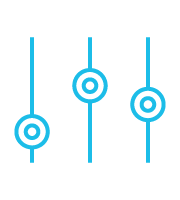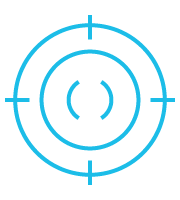Engaging a creative agency? These best practices will help you get the most out of your collaboration.
No matter the industry, we all want to do great work — smart, inspiring and impactful work that makes a difference. When it comes to selling your latest software security solution, or leadership training program, a collaborative client-agency relationship is key to giving your latest and greatest the light it deserves.
Thankfully, there is a tried and true process we use to maximize our marketing efforts and get the best return on investment: it’s called the creative process. The creative process doesn’t look like a bunch of light bulbs flickering on over the minds of geniuses. Rather, it’s a process of exploring different ideas together — both good and bad — and refining them to land at the best solution.
When it comes to fostering a strong, productive client-agency collaboration, the creative process can be a real superhero. And so can the client.
Here are four best practices a company can employ when engaging a creative agency to promote smooth collaboration and create amazing work together.
Four Best Practices for Better Creative Collaboration

SET THE TONE
Whether producing a single video project or undertaking a complete digital strategy, it’s important to set the tone right away by clearly outlining your expectations for your creative agency. Taking care to define the project’s objectives, target audience, and communication challenges will ensure a laser focused creative process and smooth collaboration.
Also, take time to think about the kinds of creative material that inspire you and the company. Providing your agency with specific creative references will help keep them from straying too far from your vision and will cultivate greater efficiency.

CONSIDER ALL SIDES
As you move into the development of ideas, guide your agency through the business goals that are driving your project so they can respond with concepts that are appropriate for those goals.
You may have something specific in mind at the onset of your project, but remember to be open-minded as well. After all, the most innovative ideas often come from unexpected places. Your agency may cook up an alternative way to solve the communication obstacle that’s worth considering.
For instance, you may want to create a presentation highlighting the latest findings in your research, but perhaps developing an interactive microsite would invite more user exploration and engagement. Even so, it’s important to remember that both parties in this partnership are experts. Nobody is more knowledgeable about the product or service than you, the client. And the agency is brimming with specialists in strategy and design. Balance the integrity of information with creative ways to communicate it.

BE CONCISE
The design and execution phase of the project will reveal opportunities for refinement along the way. Whether a live action video, animation, infographic, presentation, or landing page, the goal is still the same: engage viewers and encourage them to take action.
Because marketing messages must battle waning attention spans, remember that a concise message is often the most effective message. Resist this temptation to pack in every bit of good information about your product. In many cases, a video meant to spark excitement for a new product launch will lose its effectiveness by becoming a tedious list of product features. Focusing instead on a select group of differentiating features will not only be easier to remember but will keep eyeballs scanning all the way to that CTA.

STAY FOCUSED
Reviewing work throughout the stages of the creative process is crucial to completing a project on time and on budget.
Review cycles tend to run smoothly when working with a condensed team of stakeholders who are all very familiar with the full context of the project objectives. Often times, too many opinions can stir up the integrity of a concept and water down its impact. Establishing a clear approval process at the onset is the best way to avoid endless iteration.
Identifying a single point of contact on the company side to filter and consolidate all feedback into one direction helps keep communication with your agency clear and the project moving forward. And as long as your feedback is constructive, your creative agency will respond positively and project morale will continue in the right direction.
Distilling ideas into great solutions isn’t easy.
Your latest and greatest solution deserves sharp creative. It deserves a marketing effort that strikes a chord with your audience. Savvy client-agency collaboration is what it takes to leave your mark. Hopefully, these best practices will help you foster great work along the way.
